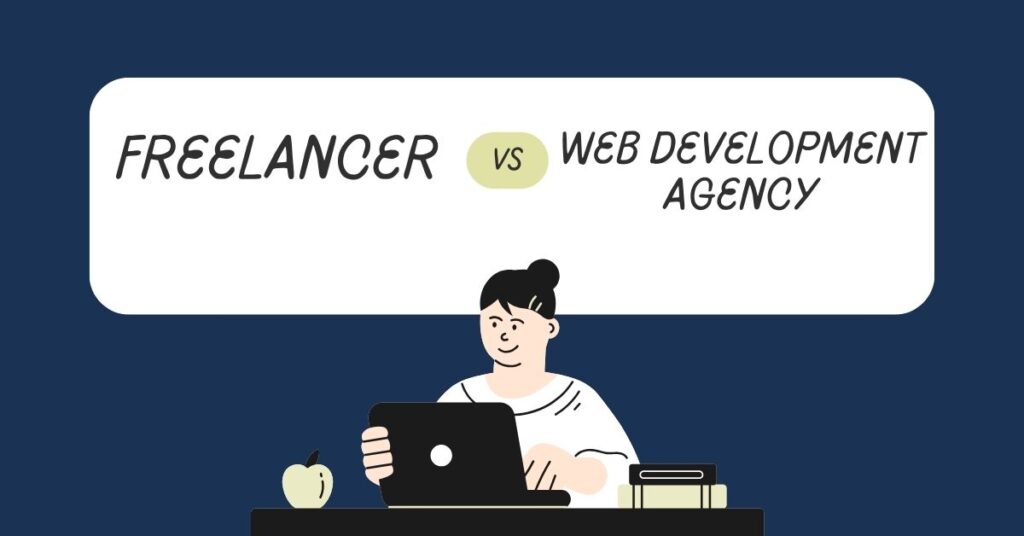
The web development landscape is a dynamic beast, constantly evolving and demanding developers to stay ahead of the curve. Whether you’re a seasoned professional or an aspiring web whiz, choosing the right and programming languages to learn in 2024 can significantly enhance your career prospects and empower you to build innovative web applications.
This guide delves into the top web development languages that are poised to dominate the scene in 2024, analyzing their strengths, weaknesses, and ideal use cases. By the end, you’ll be equipped with the knowledge to make informed decisions about which languages to prioritize in your learning journey.
1. JavaScript (King of the Web):
JavaScript remains the undisputed king of web development, reigning supreme for front-end interactivity and user interface (UI) manipulation. Its versatility extends beyond the browser, with frameworks like Node.js enabling server-side development, making it a truly full-stack language.
-
Strengths:
- Ubiquitous and Versatile: JavaScript is supported by all modern browsers, making it essential for creating dynamic and interactive web experiences.
- Large Developer Community: A vast developer community provides extensive resources, libraries, and frameworks for almost any web development task.
- Full-Stack Potential: Frameworks like Node.js empower JavaScript to handle both front-end and back-end functionalities.
-
Weaknesses:
- Can Be Messy: JavaScript code can become complex and difficult to maintain without proper organization and coding practices.
- Learning Curve: While considered beginner-friendly, mastering advanced JavaScript concepts can require dedication.
-
Ideal Use Cases:
- Interactive Websites and Web Applications: From adding animations and form validation to building single-page applications (SPAs), JavaScript is the go-to choice for front-end development.
- Server-Side Development (with Node.js): Node.js allows JavaScript to handle server-side tasks like real-time applications and data APIs.
2. Python (The All-Rounder):
Python‘s popularity continues to soar, not just in web development but also in data science, machine learning, and automation. Its clear syntax and focus on readability make it an excellent choice for beginners and experienced developers alike.
-
Strengths:
- Beginner-Friendly: Python’s clean and concise syntax makes it easy to learn, reducing the initial barrier to entry for new developers.
- Extensive Libraries and Frameworks: A rich ecosystem of libraries like Django and Flask simplifies web development tasks and common functionalities.
- Versatility: Python extends beyond web development, allowing you to explore data analysis, machine learning, and scripting.
-
Weaknesses:
- Performance: While improving, Python can be slower than some compiled languages for computationally intensive tasks.
- Not Ideal for Large-Scale Applications: Python might not be the best choice for highly complex or resource-intensive web applications.
-
Ideal Use Cases:
- Rapid Prototyping and Minimum Viable Products (MVPs): Python’s rapid development capabilities make it ideal for creating prototypes and MVPs to test and validate your web app concepts.
- Web Applications with Data Analysis or Machine Learning Integration: If your web app involves data analysis, machine learning, or automation, Python’s versatility makes it a powerful choice.
3. TypeScript (Building Scalable and Maintainable Web Apps):
TypeScript, a superset of JavaScript, adds optional static typing to the language. This enhances code readability, maintainability, and helps catch errors early in the development process.
-
Strengths:
- Improved Code Quality: Static typing in TypeScript reduces runtime errors and promotes cleaner, more maintainable codebases.
- Large JavaScript Ecosystem: TypeScript leverages the vast ecosystem of JavaScript libraries and frameworks, ensuring compatibility and access to a wealth of resources.
- Focus on Scalability: TypeScript is well-suited for building large-scale web applications requiring robust code structure and maintainability.
-
Weaknesses:
- Learning Curve: If you’re new to JavaScript, adding static typing might introduce a slightly steeper learning curve.
- Transpilation Required: TypeScript code needs to be transpiled to plain JavaScript before running in a browser, adding a small extra step to the development process.
-
Ideal Use Cases:
- Large-Scale Enterprise Applications: For complex web applications requiring a strong focus on code maintainability and scalability, TypeScript shines.
- Team Development Projects: TypeScript’s emphasis on type safety is particularly beneficial in collaborative development environments to ensure code clarity and consistency.
4. Go (The Efficient Choice):
Go, developed by Google, is gaining significant traction in the web development world. It’s known for its clean syntax, speed, and focus on concurrency, making it well-suited for building high-performance web applications.
-
Strengths:
- Fast and Efficient: Go compiles directly to machine code, resulting in highly performant and responsive web applications.
- Concurrency Support: Go’s built-in concurrency features make it ideal for handling multiple requests simultaneously, improving scalability.
- Simple and Readable Code: Go’s syntax is clean and easy to learn, promoting code maintainability and developer productivity.
-
Weaknesses:
- Relatively Young Language: Compared to Python or JavaScript, Go is a younger language with a smaller developer community and fewer readily available libraries.
- Steeper Learning Curve: For developers unfamiliar with concurrency concepts, Go’s approach might require extra learning effort.
-
Ideal Use Cases:
- Microservices and APIs: Go’s efficiency and concurrency make it a great choice for building microservices and APIs that need to handle high volumes of traffic.
- Real-Time Applications: Go’s ability to handle concurrent requests efficiently makes it suitable for building real-time applications that require responsiveness.
- Command-Line Tools (CLIs): Go excels at building performant and user-friendly command-line tools.
5. PHP (The Server-Side Veteran):
PHP remains a dominant force in web development, particularly for server-side scripting and back-end functionalities. Its mature ecosystem, ease of use, and extensive community support make it a popular choice for building dynamic websites and web applications.
-
Strengths:
- Mature and Stable: PHP has been around for decades, boasting a mature and well-tested codebase, making it a reliable choice for web development projects.
- Large Developer Community: With a vast developer community, you’ll find ample resources, tutorials, and libraries readily available for your PHP development needs.
- Easy to Learn: PHP has a relatively simple syntax, making it beginner-friendly and approachable for developers new to server-side scripting.
-
Weaknesses:
- Can Be Less Performant: Compared to some newer languages like Go, PHP might not be the best choice for highly performance-critical applications.
- Security Concerns: If not handled carefully, PHP code can be vulnerable to security exploits. Developers need to follow best practices to ensure secure coding.
-
Ideal Use Cases:
- Dynamic Websites and Web Applications: PHP excels at building dynamic websites with user interaction, database integration, and content management systems (CMS).
- E-commerce Applications: Many popular e-commerce platforms are built with PHP, making it a strong choice for building online stores.
- Legacy Codebase Maintenance: If you’re working with an existing website or application built with PHP, maintaining and extending functionalities with PHP is often the most efficient approach.
6. Ruby (The Agile Choice):
Ruby, known for its elegant syntax and focus on developer productivity, is a popular choice for building web applications. Its dynamic nature and extensive gem library (similar to package managers) offer a vast array of functionalities for web development.
-
Strengths:
- Expressive Syntax: Ruby’s syntax is clean and readable, often described as “natural language-like,” making it enjoyable to write and maintain.
- Large and Active Community: The Ruby on Rails framework built on Ruby boasts a vibrant community and extensive resources for web development.
- Focus on Developer Productivity: Ruby’s design emphasizes developer experience, allowing for rapid prototyping and efficient coding practices.
-
Weaknesses:
- Performance: While improving, Ruby can be slower than some compiled languages for computationally intensive tasks.
- Limited Scalability: For very large-scale applications, Ruby might not be the most scalable option compared to some languages.
-
Ideal Use Cases:
- Web Applications with Rapid Prototyping Needs: Ruby on Rails is well-suited for quickly building and validating web app concepts due to its rapid development capabilities.
- Content Management Systems (CMS): Several popular CMS platforms are built with Ruby on Rails, making it a familiar choice for CMS development.
- Web Applications with Developer Experience Focus: If developer productivity and code readability are high priorities for your project, Ruby on Rails’ clean syntax and focus on developer experience make it an attractive choice.
7. Java (The Enterprise Powerhouse):
Java remains a cornerstone of enterprise web development, known for its robust features, object-oriented programming paradigm, and platform independence (code written in Java can run on various operating systems). Its vast ecosystem and mature tooling make it a reliable choice for large-scale applications.
-
Strengths:
- Enterprise-Grade Features: Java offers robust features like garbage collection and strong type safety, making it well-suited for building secure and reliable enterprise applications.
- Object-Oriented Design: Java’s object-oriented approach promotes code modularity, reusability, and maintainability in large projects.
- Platform Independence: “Write Once, Run Anywhere” is a core principle of Java, allowing code to run seamlessly on different operating systems.
-
Weaknesses:
- Verbosity: Java code can be more verbose compared to some other languages, potentially requiring more lines of code to achieve the same functionality.
- Steeper Learning Curve: Java’s object-oriented concepts and syntax might require a more significant initial learning investment for beginners.
-
Ideal Use Cases:
- Large-Scale Enterprise Applications: Java’s robust features and scalability make it a popular choice for building complex enterprise web applications.
- Financial Applications: Due to its security focus and reliability, Java is often used in developing financial applications and banking systems.
- Cross-Platform Applications: Java’s platform independence allows applications to run on various operating systems, making it suitable for cross-platform development needs.
Frameworks to Consider:
While these languages are powerful on their own, leveraging popular frameworks can significantly streamline web development. Here are some top choices to consider alongside the languages mentioned above:
- React (JavaScript): A dominant front-end framework known for its component-based architecture and virtual DOM, enabling creation of dynamic and interactive user interfaces.
- Angular (TypeScript): A comprehensive framework built on top of TypeScript, offering a structured approach for building complex single-page applications (SPAs).
- Django (Python): A high-level Python framework that promotes rapid development by providing a pre-built structure and tools for common web development tasks.
- Ruby on Rails (Ruby): A full-stack web development framework built on Ruby, known for its convention over configuration approach and focus on developer productivity.
- Spring (Java): A popular Java framework offering a comprehensive set of tools and functionalities for building enterprise-grade web applications.
Conclusion
The “best” language for web development depends on your specific project requirements, skill set, and career goals. Consider the factors mentioned above to make an informed decision. Remember, the most important aspect is to continuously learn and adapt to the ever-evolving web development landscape. Explore online resources, tutorials, and experiment with different languages to find what works best for you. By learning new skills yourself, you’ll be well-positioned to thrive in the exciting world of web development.
FAQ for Choosing the Right Web Development Languages in 2024
1. Which language is the absolute best for web development?
There’s no single “best” language. The optimal choice depends on your project’s specific needs, like target platforms, app complexity, team expertise, performance requirements, and budget.
2. What’s the difference between front-end and back-end development?
Front-end development focuses on the user interface (UI) and user experience (UX) of a website or web application, while back-end development handles server-side logic and database interaction. Languages like JavaScript and its frameworks are often used for front-end development, while PHP, Python, and Java can handle both front-end and back-end functionalities with the help of frameworks.
3. Is JavaScript a must-learn for web development?
Yes, JavaScript is practically the foundation of modern web development. It’s the primary language for creating interactive and dynamic elements on websites and web applications.
4. What’s the benefit of learning Python for web development?
Python’s beginner-friendly syntax and extensive libraries make it a great choice for rapid prototyping and building web applications with data analysis or machine learning integration.
5. When should I consider using TypeScript over JavaScript?
TypeScript offers optional static typing, improving code readability, maintainability, and reducing errors. It’s particularly beneficial for large-scale, complex applications and team development projects.
6. What are the advantages of using Go for web development?
Go excels at building high-performance and efficient web applications due to its clean syntax, focus on concurrency, and ability to handle multiple requests simultaneously.
7. Why is PHP still a relevant language for web development?
PHP boasts a mature and stable ecosystem, making it a reliable choice for building dynamic websites and web applications with user interaction, database integration, and content management systems (CMS).
8. What makes Ruby on Rails attractive for web development projects?
Ruby on Rails is known for its elegant syntax, focus on developer productivity, and rapid prototyping capabilities. It’s a popular choice for building web applications where developer experience and code readability are high priorities.
9. When would I choose Java for web development?
Java’s robust features, object-oriented design, and platform independence make it a reliable choice for building large-scale enterprise applications, financial applications, and cross-platform web projects.
10. How can I stay updated on the latest web development trends and languages?
Actively follow online resources, tutorials, and communities dedicated to web development. Explore popular frameworks like React, Angular, Django, Spring, and Ruby on Rails to stay ahead of the curve. Remember, continuous learning is essential in this ever-evolving field.


